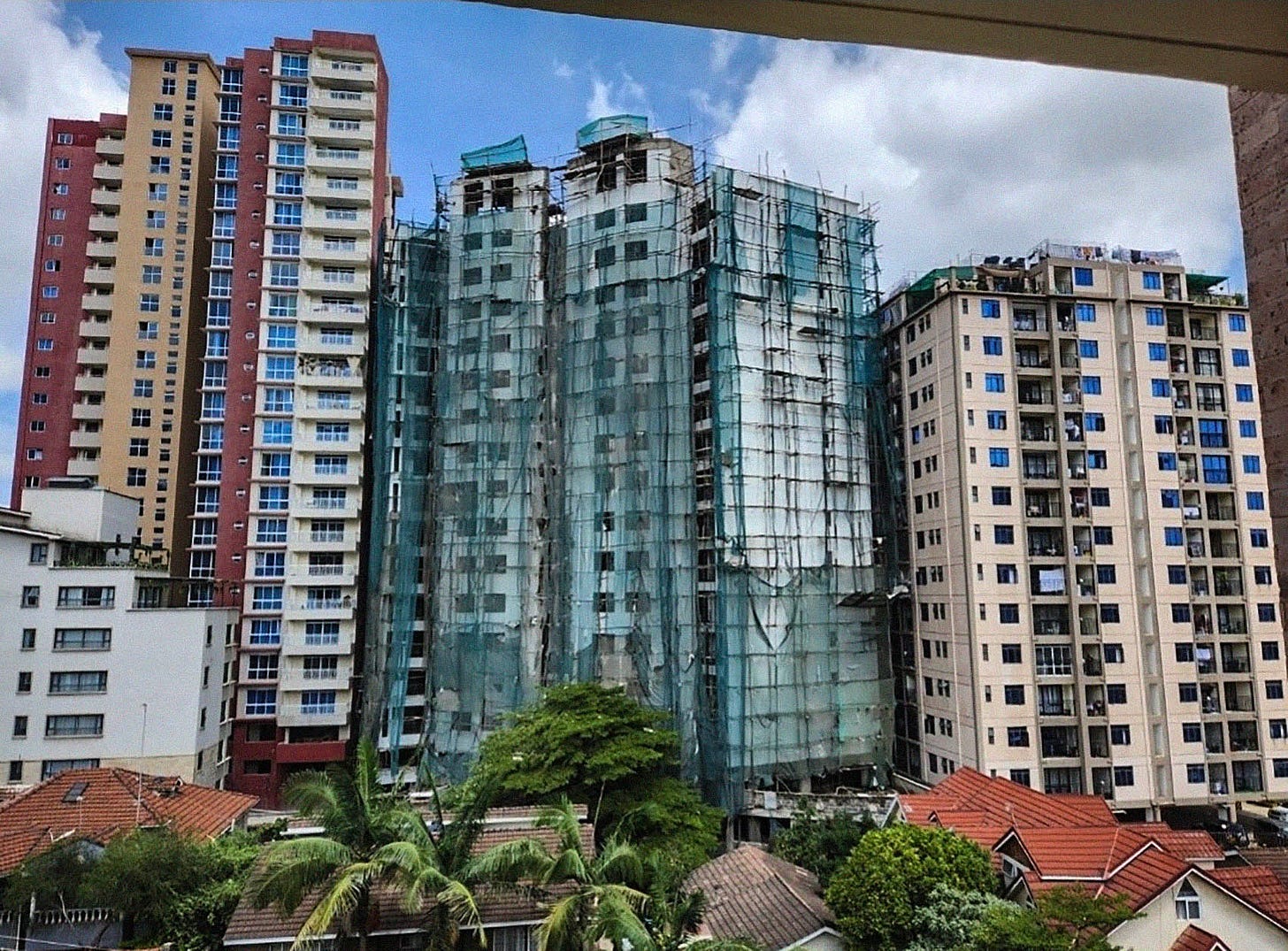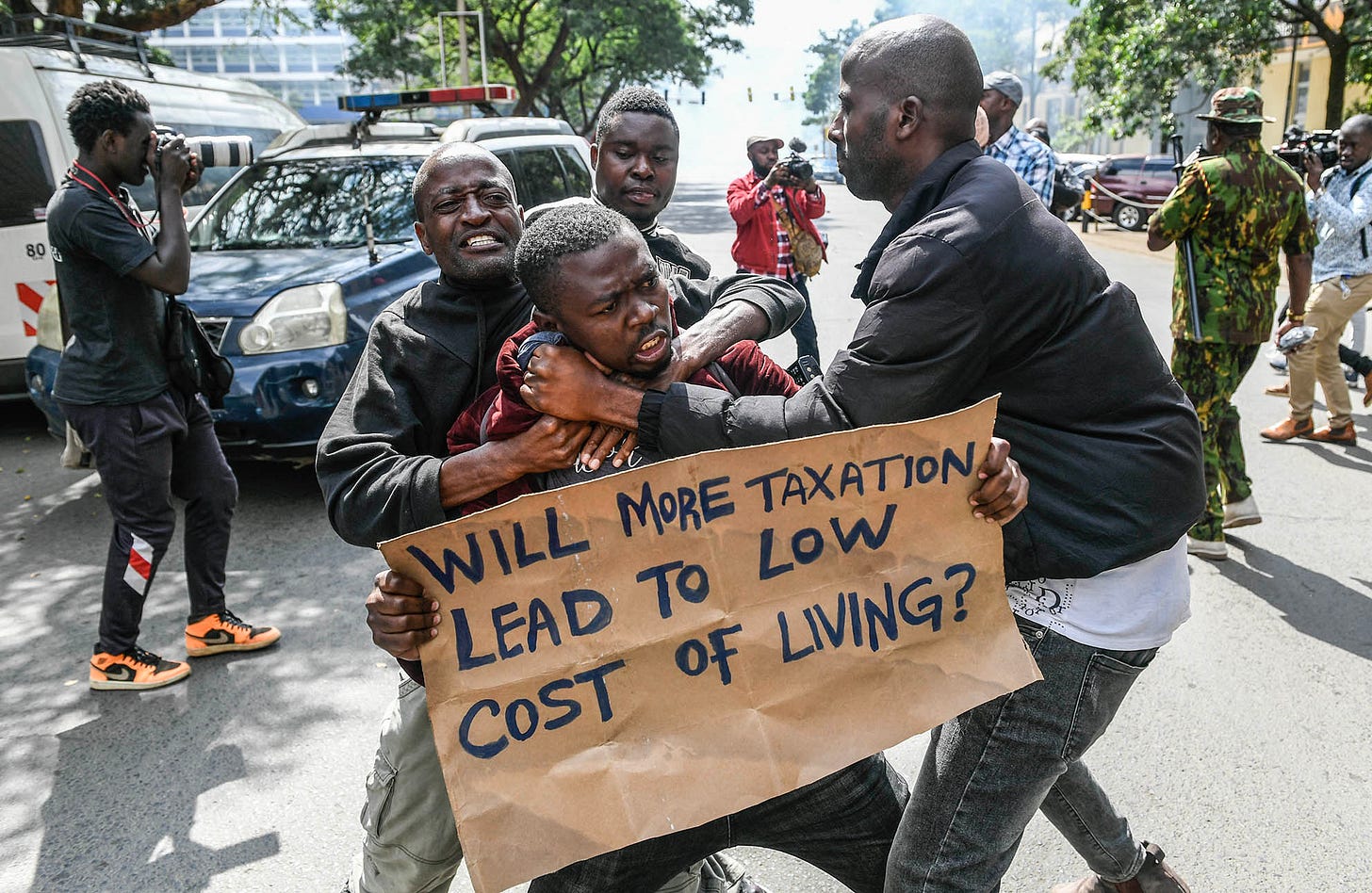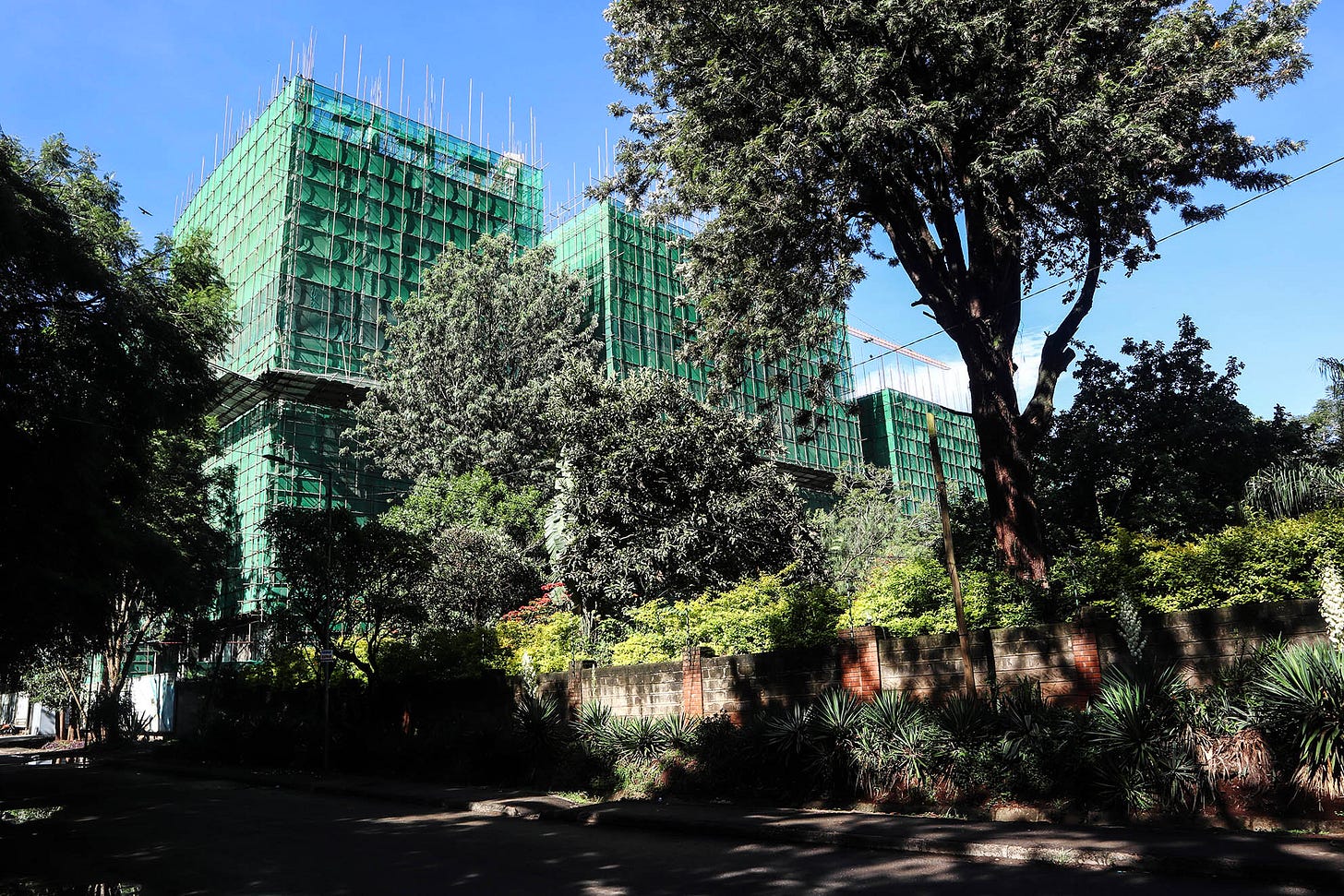Nairobi’s high-rise future unsettles its upmarket neighbourhoods
City planners say the only way is up. Well-to-do residents, worried about poor planning, disagree.
Vincent Ng’ethe in Nairobi

One Saturday morning in early April, some residents of Nairobi’s Kilimani suburb huddled together virtually, to discuss what to do about the rapid transformation of their upmarket neighbourhood.
Known for its lush, well-appointed estates, Kilimani has recently seen an influx of private real estate developers who build massive apartment blocks among single-family houses. Residents complain they leave no room for green spaces, cut down stately, mature trees, and work noisily all day and late into the night.
In another high-end suburb, Westlands, similar concerns were aired in person at a meeting in between residents and a developer who wanted to build 130 units on a riverside plot measuring 1,300 square metres. Residents complained that the developer’s traffic projections were inaccurate; that the excavation of new foundations would lead to the collapse of their homes; that the supply of water, which flows from the taps only twice a week, would be further strained; and that sewers would be unable to cope.
The new developments appear to be in line with Nairobi governor Sakaja Johnson’s vision for the rapidly growing city. “In 2050, Nairobi will have a population of 10-million people. Shall we expand Nairobi? No. The only place we have to go is up. We just need to improve the water and sewerage,” he said in late March, arguing for the relaxing of height limits in the city.
His remarks drew an immediate response from associations representing Kenyan architects, planners, property developers and the residents of some of Nairobi’s neighbourhoods. In a joint statement, they said they recognised the need to accommodate the city’s growing population but accused the governor of approaching it with disregard for “correct legal procedure and good order”.
“It is no longer about serving the citizens of Nairobi; it is about how much money we can collect from the developers, and so the service is thrown out the window,” said Florence Nyole, the president of Kenya’s association of architects, one of the collectives which signed the statement.
The statement urged the governor to prioritise sewerage and water networks, solid waste management, public transport, schools, health amenities, open green spaces, and fire and emergency services.
Borrowing from the poor
Unaccustomed to popular protest, Kilimani’s well-off residents were not entirely sure what to do to get heard by the city administrators over developer interests. So they turned to someone who knows how to do just that, inviting Daudi “Toure” Anami to their April meeting.
Toure works with the Mukuru Community Justice Centre, an organisation that defends human rights in one of Nairobi’s largest informal settlements. In 2020, the community in Mukuru successfully took back a public school that had been grabbed and turned into a private school.

“Toure, how do you mobilise people to come out on the streets for a protest in large numbers?” a moderator asked. “That is where Kilimani will have to go.”
Toure emphasised that communication was key – people must realise why these issues matter. “If you just tell people ‘tomorrow we are protesting’ and they don’t know how they are linked to the issue, they might not turn up,” he said.
Also on the call was Jerotich Seii, a lawyer with a history of activism, who had previously taken on the country’s power utility. She traced the start of her urban activism to an encounter with work crews on a building site. “Last year, when I tried to confront some excavators, I was roughed up by the contractor doing the excavation, and then I said, no, I have to speak,” she said on the call.
On social media, she began to compile photos and videos of building projects that appeared to be flouting regulations: working into the night after permitted hours, felling trees, and digging from ‘beacon to beacon’, a controversial building practice where excavators work right to the edges of the property boundary.
Seii said Chinese developers were behind some of the largest developments, and has implied publicly that Governor Johnson is fast-tracking permits for them. The governor denies this, and is suing Seii for defamation.
In the Kilimani neighbourhood online meeting, Seii accepted that there was some hypocrisy involved in protesting now, having never done so when poor urban planning threatened Nairobi’s lower-income areas. “True,” she said. “But sometimes the shoe has to pinch badly. Maybe this monstrosity had to come up right next to me so that every day I watch with horror as they do what they are doing, so it inspires me to act.”
‘Not in my backyard’ activism?
The developers have a different perspective. One of them, Michire Mugo, has worked for years in Kilimani. He describes Jerotich Seii and other protesting residents as “entitled” (she, in turn, describes him as a “fixer” for larger Chinese developers). From its birth when white settlers divided it into European, Asian and African quarters, Nairobi has been spatially segregated. Its poorer residents tend to live in high density neighbourhoods while the well-off spread out in the leafy sections. In this context, concerns about crowding upmarket estates – where prescriptive bylaws limited dwelling units per plot – risk being dismissed as mere classism.

Mugo told The Continent that the nature of property development has changed in Kilimani. “Around 2010, only a few people developed houses and the supply was small,” he said and so new builds targeted the wealthy. But today’s developers, often Chinese firms, go for numbers over price per unit.
Mugo said: “They are comfortable selling in large numbers to satisfy a different market”, particularly studio apartments that work well as AirBnBs.
Kilimani remains popular with developers because it has infrastructure that is lacking elsewhere: water, electricity, sewerage, security and good roads.
According to Mugo, it is the government’s job to expand that infrastructure to cope with new developments. “We are all taxed. So if Nairobi Water has not found it necessary to expand sewerage, or the government has not allocated money, do you stop development because the sewer has not been developed?”
In the end, nature might get the last word: In April, the long rains drowned much of Nairobi. Rivers burst their banks, flooding homes, making roads impassable, destroying people and homes.
Stung by criticism from other politicians, Governor Johnson ordered a halt to all building approvals and excavations in the city – seemingly an implicit admission that something was wrong.
For now, at least, his high-rise city plans are on hold, and upmarket backyards are once again safe from redevelopment






